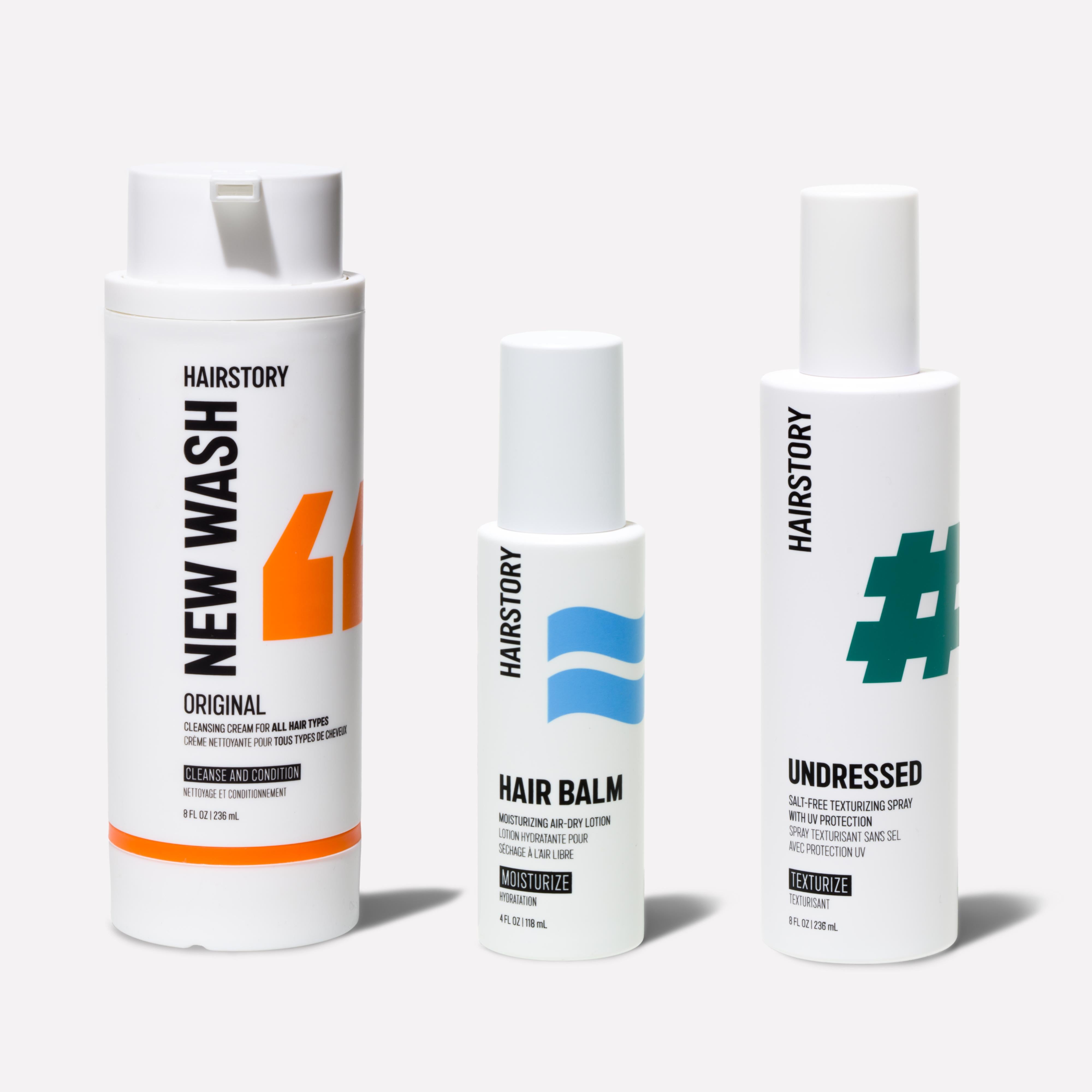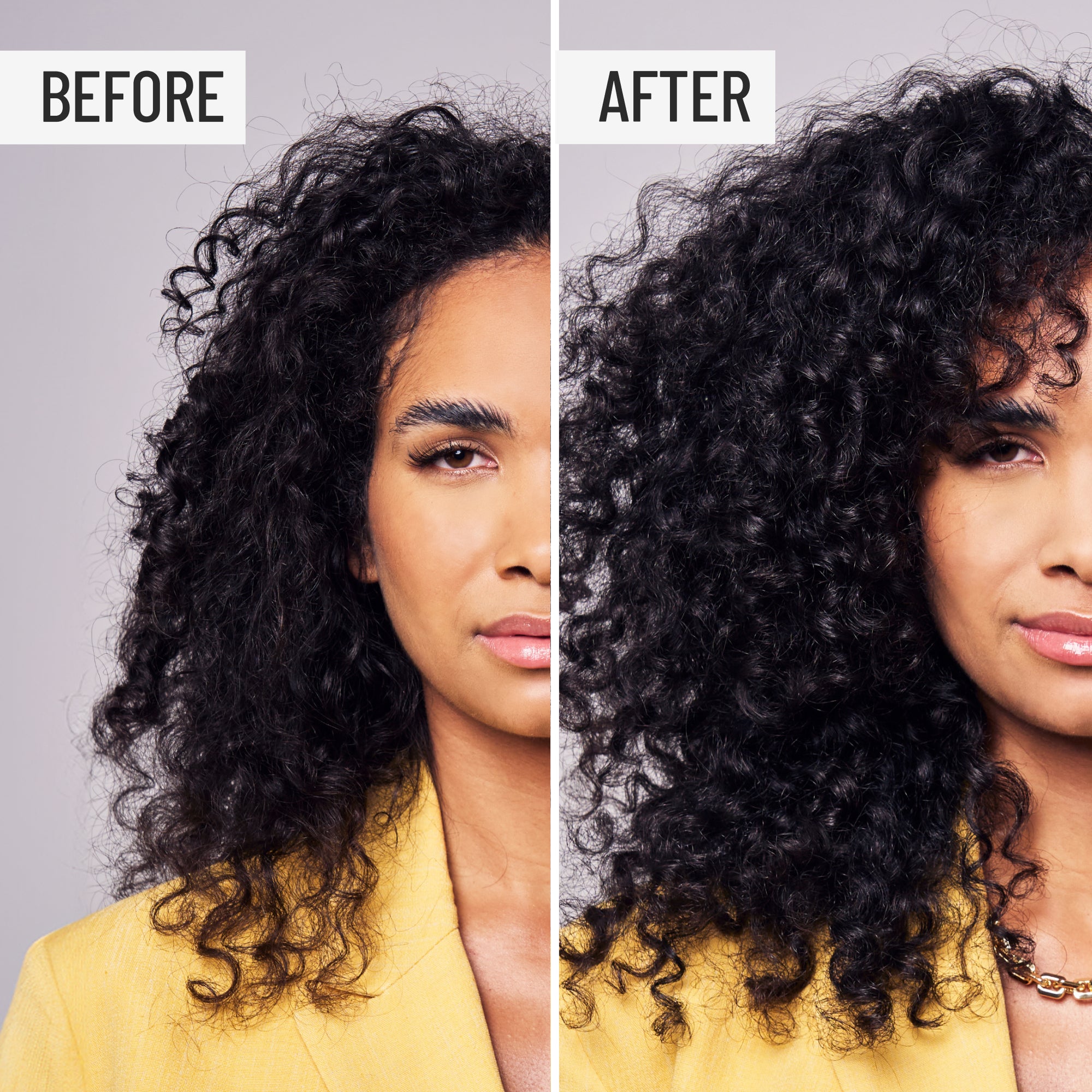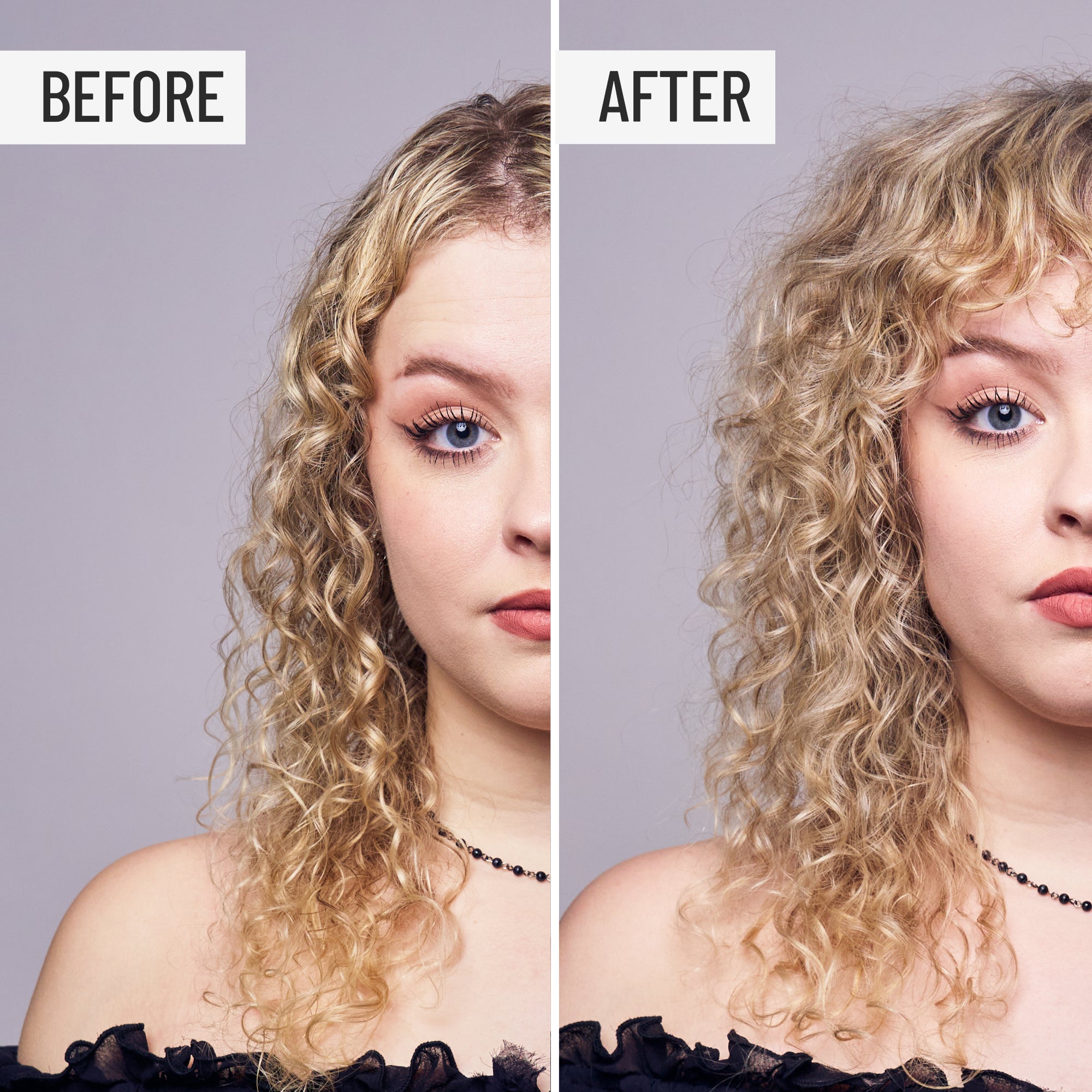Have you ever looked at a photo of yourself and been absolutely floored by the visible hair damage, wondering just how long that it went unnoticed? For better or worse, hair-culture has developed an almost transactional relationship with hair damage in order to achieve certain colors, textures, and looks. We know that a number of the things we do to our hair are damaging, but we do them anyway because they give us the look we want.
In this article, we’ll get to the bottom of what causes the most damage to your hair and how to spot it, which hair types are most prone to damage, and a number of hair damage treatments to prevent, lessen, and restore the health of your hair. Let’s dive in.
The Root of the Problem: The structure of hair
Before learning about hair damage, we need to walk through the structure of a single strand of hair to understand how it can be affected.
Each strand of hair can be broken into three parts:
- The protective outer layer called the cuticle
- The thick middle layer that stores pigment called the cortex
- An innermost layer called the medulla — which people with fine hair often don’t even have.
Healthy, hydrated strands of hair have a smooth, closed cuticle. Closed cuticles are shiny when their scale-like structure all reflect light in the same direction. Healthy, closed cuticles are also smooth to the touch and less prone to tangling and knotting. On the other hand, damaged cuticles have lifted scales that make them rough, dull, and prone to tangling with other strands. Damaged shafts are also more vulnerable to even more damage, because they are open,leaving the cortex unprotected.
What causes hair damage?
There are three main types of hair damage that you should become aware of:
- Mechanical damage
- Chemical damage
- Heat damage
While it will serve the health of your hair well to know the main types of hair damage, it’s equally important to recognize which styling and hair-care activities are common causes for day-to-day damage.
Examples of the most common causes of hair damage include:
-
Hair elastics, ponytails, and tight styles: It might not come as a surprise that hair ties and high-tension hairstyles stress strands, particularly at the root, and can lead to breakage. We recommend switching up your styles often!
If you need your hair off your face, pull it back in different ways to prevent a single portion bearing repeated stress. We also have a range of hair styling products to help you achieve fantastic everyday looks.
Another tip: Avoid putting wet hair into a ponytail. Damp hair is at its most elastic and can be stretched to the breaking point without gentle handling.
- Towel drying: Speaking of wet hair, avoid drying fragile hair with a towel! Curly girls have known for years that the coarse texture of terry can rough up the hair shaft, and contribute to damage. Try a microfiber towel, or an old t-shirt instead.
- Overprocessing: Overprocessing is the umbrella term for hair that has been damaged from color and bleach, chemical relaxers, and heat styling. While we will discuss the effects of all of these actions on hair, it is important to know that damage can be caused in other ways too.
-
Coloring and bleaching: Most people know that coloring your hair causes dryness and damage, but do they really know why that is? Let’s go beyond the surface level to learn exactly how hair dye works, and how its ingredients damage hair.
Various chemicals are combined and react to produce a haircolor. These chemicals include ammonia, the bleaching agent hydrogen peroxide, and para-phenylenediamine or PPD. Our natural hair color comes from varying concentrations of melanin, the same pigment that determines the color of our skin. In the dying process, peroxide interacts with melanin to alter its natural color, while also reacting with PPD to bind the applied color to the hair permanently. It’s specifically important to note that bleached hair, specifically, can be highly porous and vulnerable to breakage, heat-styling, sun damage, and pollution.
- Chemical relaxers: Relaxers are treatments used to chemically alter the structure of tight, kinky, or extremely curly hair in order to straighten it out. Relaxers work by breaking disulfide bonds within each strand in order to permanently alter the curl pattern. Relaxing can rob hair of its natural elasticity and leaves it at an increased risk for breakage.
-
Using shampoo: If you know Hairstory, you know we are staunchly against shampoo. This is because shampoo contains detergents, which clean hair too aggressively.
Is shampoo bad for your hair? Well, shampoos overclean. While they do remove impurities, they also strip away the good, natural oils our scalp produces in order to protect our skin and hair. This is why we condition – to replace that lost moisture and mimic the natural barrier that was washed away!
It doesn’t stop there – because our natural oils were stripped away, our scalp work hard to restore them, and hair gets greasy, sending us back to the shower for another wash – and a vicious cycle of cleanse, strip, and repeat.
- Heat styling: With the capacity of many tools reaching 400°F (200°C), it’s tempting to crank up the heat to get the best results in the least amount of time.
In an interview with GHD heat tools chief technology officer, Dr. Tim Moore in Stylecaster, he advises those who use their tools at maximum heat to turn the dial down. “You’ll burn the fat lipids in your hair and cause frizz,” he warns. Not only does heat styling cause frizz and contribute to color fade, it can affect the internal structure of your strands and damage internal layers of hair fibers.
As the Naturally Curly blog explains, “Water molecules inside the middle fiber – both free and bound to keratin proteins – provide critical support to the structure and properties of hair.” Heat evaporation can change the internal protein structure and change the properties of individual hair strands.
This can interrupt your curl patterns, cause frizz, and make hair less bouncy and more prone to breakage. The feel of hair can become less pleasant too with a straw-like texture.
For these reasons, it’s important to use heat tools cautiously, intentionally, and always apply a thermal protectant product beforehand. We recommend Dressed Up.
What does damaged hair look like?
Depending on the type of damage your hair is experiencing, there are telltale signs that you need some TLC:
-
Split ends, flyaways, or frizz: Damaged hair is at greater risk for breaking. Depending on where the break occurs along the shaft, you may experience these symptoms.
-
Lifeless curls, no snapback: When hair has trouble retaining its natural shape, it means many of the keratin bonds in the individual strands have most likely been weakened or broken.
- Dry, brittle strands: Healthy hair should feel smooth and moisturized.
- Color fade: Fading is a sign of highly porous hair. When the hair cuticles are openfrom damage, dye’s bond with the hair is weakened and vulnerable. This allows the pigment to essecially leak out, causing color to fade.
-
Tangles: According to RICHFEEL, the national hair and scalp center of India, “when hair is dry and damaged, the cuticle is raised and remains open. These open layers snag with each other, causing tangles and knots. The more damaged the cuticle, the worse the tangles!”
-
Lack of shine: Dull hair lacks the moisture needed for healthy, smooth cuticles. Smooth cuticles often have a more distinct shine.
- Easily soaked hair: Does your hair soak up a lot of product or air-dry extremely fast after a shower? This means it is highly porous (aka thirsty) and in need of moisture!
How to know if your hair is damaged
It might not be obvious if your hair is damaged while looking at the entire head. Take a single strand of hair between your fingers. Is it smooth or bumpy? Bumpy strands may mean the hair cuticle is open due to lack of moisture.
Are certain hair types more prone to damage than others?
Fine hair and textured hair have the greatest risk of hair damage. Fine strands can be fragile and often do not have a medulla, which is the center layer present in thicker strands. This makes the hair more vulnerable to stretching and breaking. Generally speaking, the more tightly curled hair is the greater the risk for damage because cuticles may nit lay flat while hugging such tight curves. And those sharp angles can also become stress points for breakage.
How to treat damaged hair
Just because your hair is damaged, doesn’t mean it can’t be repaired. If you haven’t already ditched your drying shampoo and conditioner for a New Wash hair cleanser, make it your first step! New Wash doesn’t strip your scalp of its natural protective barrier like shampoo does, so your hair can return to a state of equilibrium.
Looking to treat split ends? Get a trim! Can split ends heal? Unfortunately not. The only way to get rid of them – and prevent splits from traveling up the shaft, is by cutting the hair above the damage.
A few of the ways to address damaged hair come directly from grandma’s handbook and encourage you to look to the pantry, as well as the past.
According to today.com, the best and most proactive way to help out your hair is your diet. “Meat, fish, beans, and soy will arm the body to make keratin, a fibrous protein that builds hair and nails, while omega-3 fats found in fish, walnuts and flaxseed help make hair shine,” says Dr. Apple Bodemer, an assistant professor of dermatology at the University of Wisconsin School of Medicine and Public Health.Tempted to trty biotin supplements? According to Dr. Apple Bodemer, there is currently no clear evidence that vitamin B will give you thick, luscious hair, “some people swear by it, while others notice no difference.”
Another practice that has been around for thousands of years is hair oiling. Massaging hair oil it into your scalp helps to mimic the sebum your body makes. According to Vogue, applying oil strengthens the hair, protects it from heat damage, stimulates growth, and moisturizes hair to prevent frizz.
How to prevent hair damage
Some of the most common things you can do to prevent heat damage include:
- Coloring your hair less frequently or limiting bleach use
- Heat-styling less frequently and at a lower temperature
- Applying thermal protective creams and hair oils
- Using New Wash instead of shampoo and conditioner
While the visible effects of damage can be made less visible, the best thing you can do for your hair is avoid those practices that damage your hair in the first place! From the inside out: Eating well is the best prescription for overall health. From the outside in, using the gentlest cleansers on your body will preserve your skin and hair. And there’s no downside to getting your hair in its best possible shape before you experiment with styling and color. It’ll only make your efforts that much more beautiful.































